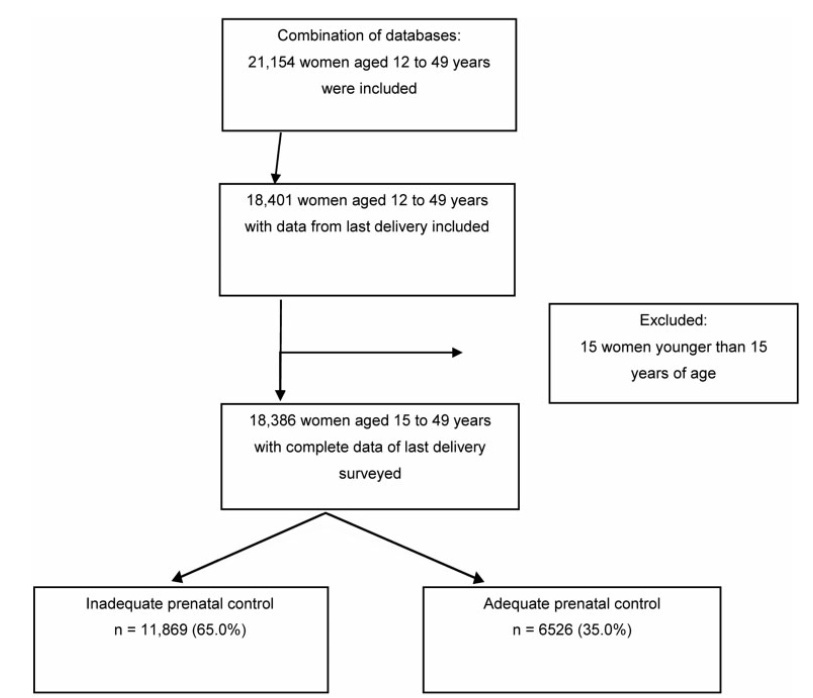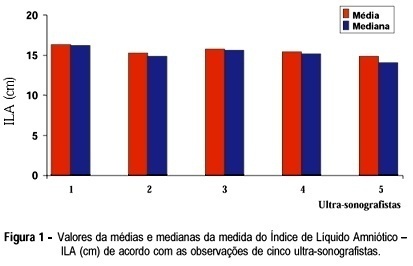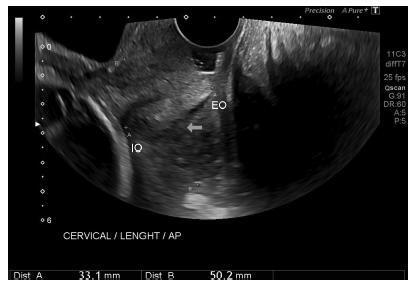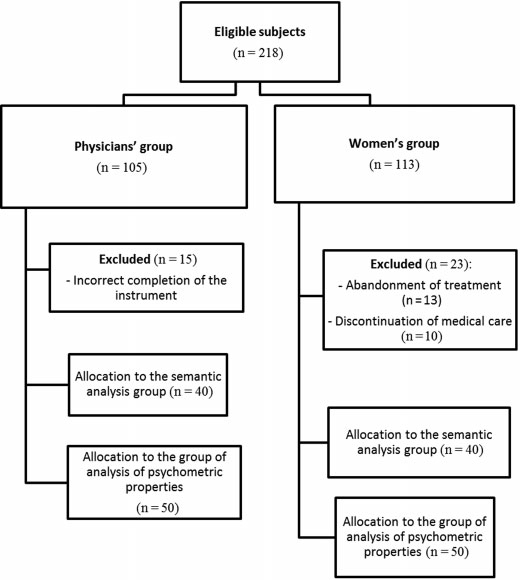Summary
Revista Brasileira de Ginecologia e Obstetrícia. 2022;44(4):442-447
Summary
Revista Brasileira de Ginecologia e Obstetrícia. 2021;43(6):442-451
To determine the adequacy of compliance with antenatal care (ANC) by pregnant women in Peru and to identify the associated factors.
An analytical cross-sectional study of data from the 2019 Peruvian Demographic and Family Health Survey (Encuesta Demográfica y de Salud Familiar, ENDES, in Spanish) was conducted. The dependent variable was adequate compliance with ANC (provided by skilled health care professionals; first ANC visit during the first trimester of pregnancy; six or more ANC visits during pregnancy; ANC visits with appropriate content) by women aged 15 to 49 years in their last delivery within the five years prior to the survey. Crude and adjusted prevalence ratios and their 95% confidence intervals were calculated using a log-binomial regression model.
A total of 18,386 women were analyzed, 35.0% of whom adequately complied with ANC. The lowest proportion of compliance was found with the content of ANC (42.6%). Sociodemographic factors and those related to pregnancy, such as being in the age groups of 20 to 34 years and 35 to 49 years, havingsecondaryor higher education, belonging to a wealth quintile of the population other than the poorest, being from the Amazon region, not being of native ethnicity, having a second or third pregnancy, and having a desired pregnancy, increased the probability of presenting adequate compliance with ANC.
Only 3 out of 10women in Peru showed adequate compliancewith ANC. Compliance with the content of ANC must be improved, and strategies must be developed to increase the proportion of adequate compliance with ANC.

Summary
Revista Brasileira de Ginecologia e Obstetrícia. 2000;22(7):443-448
DOI 10.1590/S0100-72032000000700007
Purpose: to determine the main factors associated with the occurrence of surgical site infection in patients submitted to total abdominal hysterectomy at the Instituto Materno ¾ Infantil de Pernambuco (iMIP). Methods: a cross-sectional study was conducted, enrolling patients submitted to total abdominal hysterectomy at IMIP who returned to postsurgical consultation for infection control, between January, 1995 and December, 1998 (n = 414). The frequency of surgical site infection (defined according to the CDC criteria, 1998) was 10% (42 cases). Prevalence risk (PR) of infection (dependent variable) and its 95% confidence interval (CI) were calculated for independent variables: age, obesity, hypertension, diabetes, malignant pathology, type of incision, duration of surgery and antibiotic prophylaxis. Multiple logistic regression analysis was used to determine adjusted risk of infection. Results: a significantly increased risk of infection was found for the following variables: age >60 years (PR = 2.39, 95% CI = 1.15-4.94), obesity (PR = 3.2, 95% CI = 1.83-5.59), duration of surgery >2 hours (PR = 2.35, 95% CI = 1.32-4.21) and diabetes (PR = 6.0, 95% CI = 3.41-10.57). On the other hand, risk of infection was significantly reduced when antibiotic prophylaxis was administered (PR = 0.38, 95% CI = 0.21-0.68). Type of incision, malignant disease and hypertension were not associated with infection. Conclusions: the factors associated with increased risk of surgical site infection after total abdominal hysterectomy at IMIP were: age >60 years, obesity, diabetes and surgical duration >2 hours. Antibiotic prophylaxis showed a protective effect with reduction of risk of infection.
Summary
Revista Brasileira de Ginecologia e Obstetrícia. 2007;29(9):443-445
Summary
Revista Brasileira de Ginecologia e Obstetrícia. 1998;20(8):443-448
DOI 10.1590/S0100-72031998000800003
Purpose: to demonstrate the interobserver variation existing in the ultrasonographic measurement of amniotic fluid index (AFI) and in the measurement of pocket area, and to compare these two methods. In addition, an attempt was made to establish the intraobserver variation in the measurement of this index. Methods: values of AFI, described by Phelan et al.18, were studied in a group of 80 pregnant women considered to be clinically normal, seen at the Ultrasonography and Medical Updating School of Ribeirão Preto and in the Department of Gynecology and Obstetrics of the Faculty of Medicine of Ribeirão Preto, University of São Paulo (FMRP-USP). All pregnant women had a gestational age of more than 24 weeks. Fifty of these patients were submitted to AFI evaluation by 5 different ultrasonographists using the same equipment and during the same period of time, in order to determine the interobserver variation of this index. In addition, planimetric measurement of the area was performed by 2 of these 5 ultrasonographists, selected at random, in an attempt to determine interobserver variation in area measurement. Another group of 30 pregnant women was evaluated by the same ultrasonographist in an attempt to evaluate intraobserver variation in terms of AFI measurement. Results: There was a significant interobserver variation in AFI measurement and a significant variation in area measurement. However, the intraobserver variation in AFI measurement was nonsignificant. There was a correlation between AFI and area measurements. Conclusions: we emphasize the obstetrical applicability of this index and the easier execution of this method compared to area measurement, despite the importance of both procedures.

Summary
Revista Brasileira de Ginecologia e Obstetrícia. 2017;39(9):443-452
To define transvaginal ultrasound reference ranges for uterine cervix measurements according to gestational age (GA) in low-risk pregnancies.
Cohort of low-risk pregnantwomen undergoing transvaginal ultrasound exams every 4 weeks, comprisingmeasurements of the cervical length and volume, the transverse and anteroposterior diameters of the cervix, and distance fromthe entrance of the uterine artery into the cervix until the internal os. The inter- and intraobserver variabilities were assessed with the linear correlation coefficient and the Student t-test. Within each period of GA, 2.5, 10, 50, 90 and 97.5 percentiles were estimated, and the variation by GA was assessed with analysis of variance for dependent samples. Mean values and Student t-test were used to compare the values stratified by control variables.
After confirming the high reproducibility of the method, 172 women followed in this cohort presented a reduction in cervical length, with an increase in volume and in the anteroposterior and transverse diameters during pregnancy. Smaller cervical lengths were associated with younger age, lower parity, and absence of previous cesarean section (C-section).
In the studied population, we observed cervical length shortening throughout pregnancy, suggesting a physiological reduction mainly in the vaginal portion of the cervix. In order to better predict pretermbirth, cervical insufficiency and premature rupture of membranes, reference curves and specific cut-off values need to be validated.

Summary
Revista Brasileira de Ginecologia e Obstetrícia. 2016;38(9):443-449
to translate and adapt the Patient Satisfaction Questionnaire (PSQ) to Portuguese and to assess its psychometric properties based on internal consistency, test-retest, factor analysis and divergent and convergent construct validities.
The study involved 218 participants and was approved by the local Research Ethics Committee. All participants gave written informed consent and their anonymity was ensured. The instrument was translated and culturally adapted for use in the Portuguese language. The internal consistency and factorial analysis were assessed by patients and physicians. Convergent and divergent validities were also assessed specifically for the patient group, as well as test-retest reliability. The Portuguese versions of the Patient Health Questionnaire (PHQ-9) and State-Trait Anxiety Inventory (STAI) were used for the analysis of the convergent validity. In addition, we applied a questionnaire of clinical and demographic data for the analysis of the divergent validity.
The adapted version of the PSQ showed good Cronbach’s α and test-retest values, and the results of the convergent construct validity between the PSQ and the PHQ-9 (r = 0.34; p = 0.02) and the STAI (r = 0.47; p = 0.001) were negative, significant and moderate correlations. Divergent validity showed significant correlations only with race and education. The Brazilian Portuguese versionof the PSQ proved to be a valid and reliable instrument, with psychometric properties suitable for the assessment of satisfaction among patients with chronic pelvic pain and their physicians in Brazil. The questionnairemay allow the homogenization of reports on this topic in the international literature.

Summary
Revista Brasileira de Ginecologia e Obstetrícia. 2006;28(8):443-445